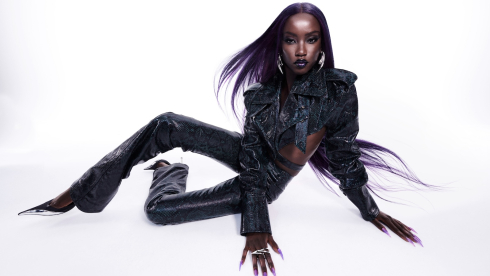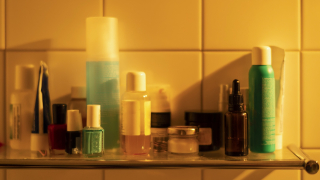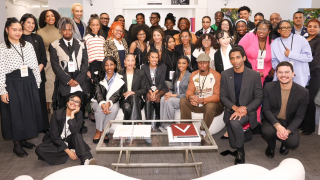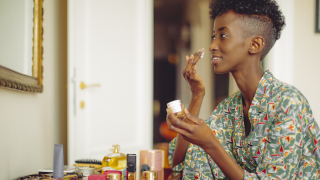Bringing a real-life person to life on stage is an undertaking that must be done with sensitivity, but Jeremy Pope was ready to commit to the challenge on every level. He’s starring as Jean-Michel Basquiat in the new play The Collaboration, now on Broadway, and portraying the renowned artist in a new film of the same name. “The project was to be a play in London, then we would do the movie and take it to Broadway, which ultimately meant that we'd have to commit our schedules to these roles for over a year,” Pope shares with EBONY. “But I come from the theater and I love Broadway. I knew that I wanted to get back there, it just had to be the right project.”
The Collaboration covers the time Basquiat spend working with pop art god Andy Warhol, which resulted in a six-year collaboration of iconic pieces, many of which can be learned about in Warhol on Basquiat. The Iconic Relationship Told in Andy Warhol’s Words and Pictures.
EBONY chatted with Pope about taking on the free-spirited artist and the thin line between vulnerability and boundaries.
EBONY: What did you know about Basquiat before taking on this project?
Jeremy Pope: I knew of his art and the legacy that he left behind—the influence he had on culture, hip hop and music and specifically as a Black man, what he contributed to the whitewashed industry at the time. As I got into the project, it was an opportunity for me to unpack and try to understand the soul and the heart behind this very sensitive individual and that's just been beautiful. He and Andy, the impact they've had on our culture and the way the world looks gave me an opportunity to look deeper than what we just know on the surface about Basquiat—the locks and the graffiti.
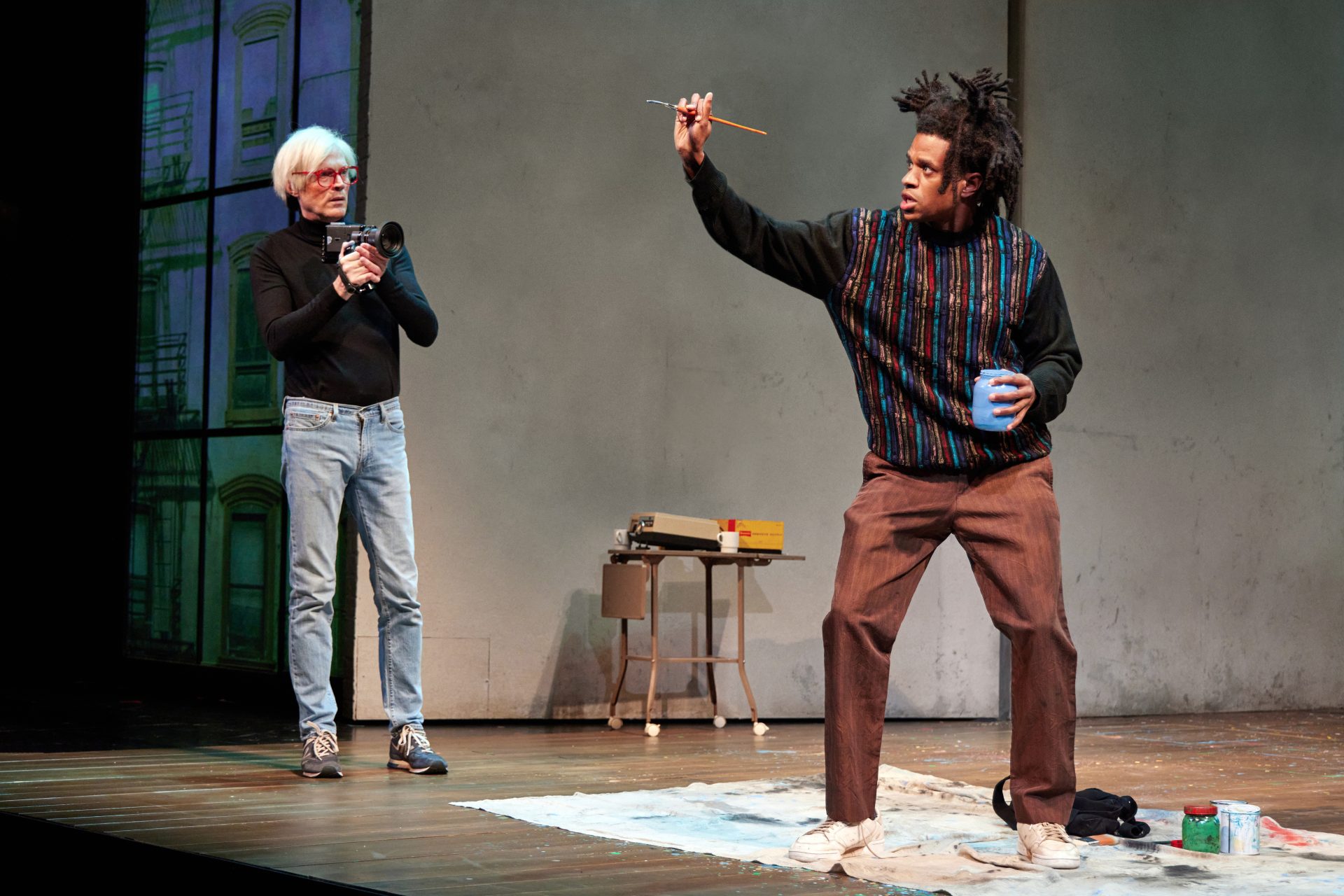
Where did you start your research on the artist?
My intention is to protect the soul and the heart of this man and to portray him in a loving and caring way. You read books, you watch interviews, you do whatever you need to do to find your way in. I think Basquiat had a very clear mind and soul and the canvas often reflects where he was emotionally, so I used the canvas and his art. His family actually put up an exhibit here in New York, Jean-Michel Basquiat: King Pleasure, and it's an insight into who he was as a brother, son and friend. I would go there anytime we were filming, because I knew that space was poured in with love by people that knew him the most.
The story imagines the private times Basquiat and Warhol spent together creating art.
We can only imagine the parties they went to! I always think about the moments that are not caught on camera, when you're at your most vulnerable. Our story gives us an opportunity to be flies on the wall and imagine what a night or two with these artists could have been like.
The play also hints that they may have had more than just a platonic connection.
I think during the 1980s, there was such a freedom of self-expression and artistry. Everyone was an artist and that was the way people exchanged love and intimacy, I think people just used their minds and their bodies in a different way at that time, and there was less labeling. Basquiat is known to have been with a lot of women, but also with men. Who's to say if he was considered gay, straight or bisexual? I think he was just a lover and creator.
At one point, you actually paint on stage?
Yes, I paint every night on stage. I feel like I can claim that now—I’m putting it on my resume! I remember reading the script and saying, “So you want me to paint and recreate some of his work and art?” I try to lean into his quality of freedom. I tend to be a perfectionist and want things to look and be a certain way, but I think Basquiat was just casual. There was comfortable swag and finesse about what he did, nothing is wrong, it's always right. To step into that freedom every night and know the canvas gonna look different has become one of my favorite moments in the show. And crazy enough, someone approached our production manager and bought a piece—so, like, I'm for real (laughs).
You also shot The Collaboration as a film.
We filmed the movie, which is similar, but different. We got to open up our world to do more, to have more characters and more locations. Now, on Broadway, the last leg of the tour, it's given me time to further understand who this giant of a sensitive creature and mysterious soul was. I'm able to give it my all every night and in me giving it my all, I learned something new about him, and I learned something new about myself.
What have you learned?
I think what I've learned about myself is there really is a cost to being a very vulnerable and honest artist. And that's what I try to be, to show up as honest as I can and put a lot of myself forward. And that's hard because sometimes it makes me feel fragile. There's a thin layer between the audience, world opinions and my truth. I relate to John and how sensitive he was to giving the world his art. He gave his all in his art. That’s taught me about boundaries. What breaks my heart about John is we didn't get to see him live a long enough life—who's to say what long enough is when you leave such an impact and legacy—but 27 years to me just doesn't feel like long enough. I think, by him being so honest and vulnerable, there was a chipping away, and sometimes people can’t protect themselves in the darkness and the realness of the world and in the hardships of being a Black man and a Black artist. For me, being representative of someone who is gay, Black, strong and in faith, in order to have that and be centered, I have to check in on my mental health and on my family and my loved ones, and not make my identity surrounded by my art and the things that people want to praise. I hope to have longevity, and I hope to continue to be an artist and use my gifts.
The Collaboration, from the Manhattan Theatre Club, now playing at Samuel J. Friedman Theatre in New York City.





